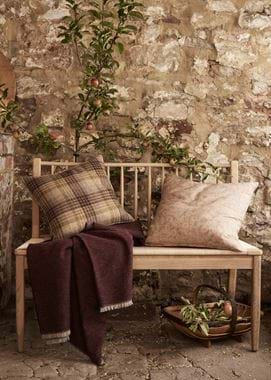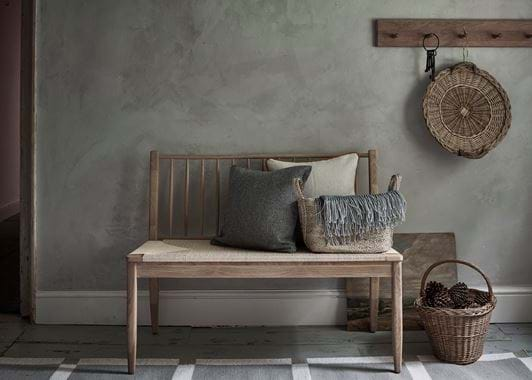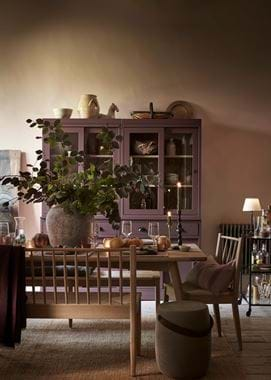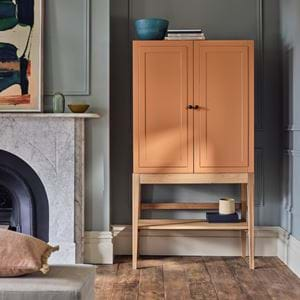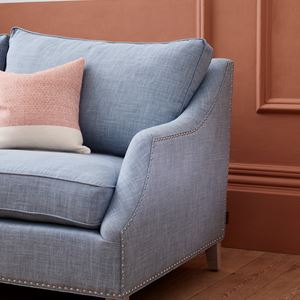Wycombe bench: a balance of beauty and utility
Wycombe bench: a balance of beauty and utility
‘William Morris put it brilliantly, “Have nothing in your house that you do not know to be beautiful or believe to be useful.” At Neptune, we take this a step further with designs that provide beauty and utility.’
This statement from our co-founder John is our north star in the design process. For our spindle-back Wycombe bench, the journey of translating our vision into the final piece was one that considered form and function throughout.
The first step in its design began with the Wycombe family’s collective inspiration: the tapered legs, simple shape and woven seat of the Morris & Co. Sussex chair. In contrast to Victorian Britain where elaborate extravagance reigned supreme, William Morris’s design ideals reflected those more widely felt by the end of the 19th century, a time in which the Arts & Crafts movement was born as a counter response to the Industrial Revolution. The movement encouraged a return to simpler methods of making, natural materials and respect for the environment to create pieces that celebrated honest forms and individual craftsmanship.
These values are epitomised in the integrity of the bench’s design. For the frame, we’ve used strong white oak gathered from the north Appalachian Mountains, primarily from Tennessee. The area is known for its sustainability efforts; for every tree harvested or decaying, 2.4 naturally grow back in its place. In the past 25 years, this has increased the Appalachian forest by over 300,000 acres. But these aren’t the only reasons for choosing white oak: ‘The timber we’ve used is classic when it comes to making strong, robust furniture,’ explains Wycombe’s designer, Henry. ‘The spindles also look beautiful when you cut them because the shape displays the wood’s natural character – you’ll never get two pieces that are the same, each is unique, and that’s the beauty.’
Ultimately, longevity and durability were key in the bench’s design. Everyday wear can take its toll, but we’ve countered this issue by protecting the timber with a coat of our Natural Oak IsoGuard. This is a linseed-oil based formula that won’t mask the character of the wood grain. And, unlike most protective coatings, it contains no harmful VOCs.
Another distinctive element of the bench is its woven seat. Rather than using natural rush, as Arts & Crafts designs often did, we’ve chosen paper cord instead – lighter and more uniform in colour but with all the texture of rush, this was the preferred material of many mid-century designers too, including Hans J Wegner for his Wishbone chair. ‘The twisted paper cord is coated in our protective wax finish, so it’s easy to clean away spills as liquid will pour off the material rather than stick to it.’
The next step in the design process was to hone the finer details. Usually, you’d have two separate pieces of wood running from top to bottom along the back edges of a bench, but Henry opted for just one continuous piece. ‘This makes the bench remarkably strong and means the distinctive grain runs seamlessly all the way down the edges.’ The spindle backrest also has a gently curved profile for comfort and support.
From a practical perspective, we also considered how the bench would harmonise with other pieces in the home. That’s why the size and style complements the 150cm table in our Wycombe collection. ‘The legs of the table sit at a slight angle so the bench won’t bump into them when it’s pushed under and you’ll have plenty of legroom too,’ says Henry.

